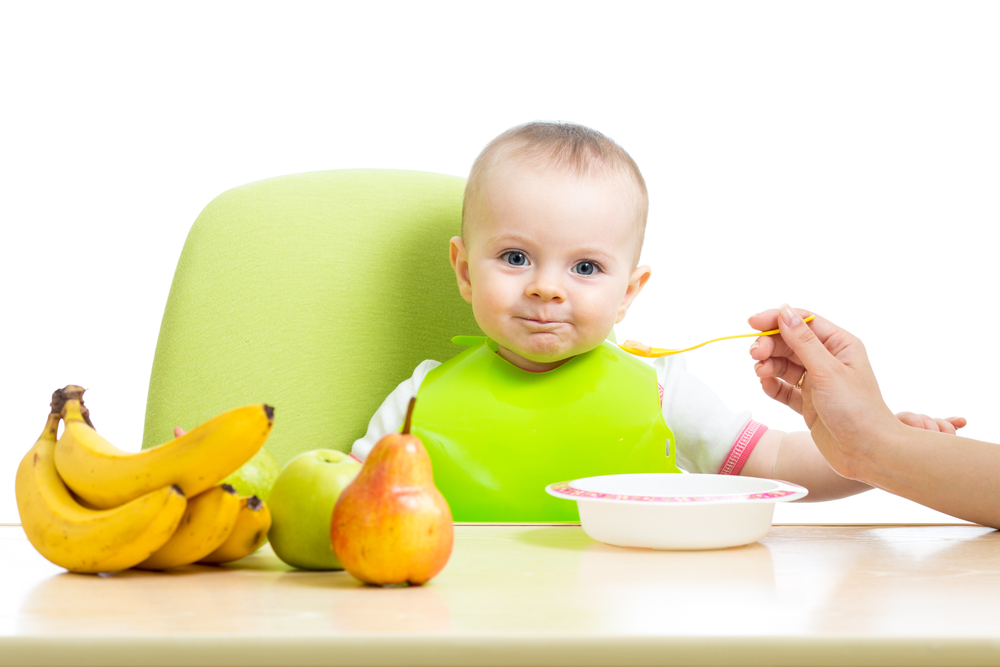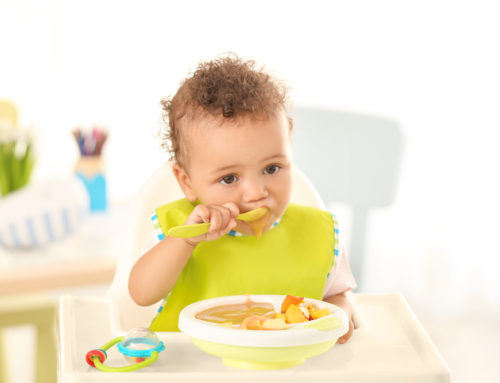_x000D_
_x000D_
As Thanksgiving and the start of the holiday season draws near, it’s_x000D_
only natural to want your baby to enjoy eating his first real meal. Of course,_x000D_
cultivating a future foodie may be easier said than done, especially as the_x000D_
temperamental toddler years approach. With a little expert advice from_x000D_
pediatricians and dieticians, you’ll be able to get your child started on_x000D_
solids and expose him to the wonderful world of healthy eating.
_x000D_
_x000D_
First Foods
_x000D_
_x000D_
How do you know your baby is ready to expand his diet beyond the basic_x000D_
bottle? Take a cue from your little one directly. “A baby will show signs that_x000D_
he is developmentally ready, such as sitting up with support, being able to_x000D_
hold his head up, showing interest in his food and being able to take food off_x000D_
a spoon,” says Bridget Swinney, a registered dietician and author of Baby Bites: Everything You Need to Know_x000D_
About Feeding Babies and Toddlers in One Handy Book. This is typically_x000D_
between four and six months of age.
_x000D_
_x000D_
Once you’re ready to start, experts suggest foods that are iron-rich_x000D_
such as rice cereal and pureed meats. Dr. Kathy Erlich, a pediatrician and_x000D_
co-author of Super Nutrition for Babies,_x000D_
suggests making your own food and mixing it with breast milk, formula or even_x000D_
homemade broth. “It’s high in minerals, nutrients and calcium,” she says of the_x000D_
latter. “Babies 6-12 months are in need of iron because the red blood cells_x000D_
[received from their mother] are dying off.”
_x000D_
_x000D_
Fruits and vegetables are another important food group to introduce into_x000D_
a baby’s diet. Erlich recommends first fruits such as sweet potato, avocado and_x000D_
pureed apples rich in vitamin C to help absorb iron. As for veggies, look for_x000D_
those that are easily digestible: peas, carrots and squash. If you’re preparing_x000D_
your own baby food, it’s best to steam vegetables (rather than boil) to avoid_x000D_
the loss of nutrients, advises Lauren O’Connor, a registered_x000D_
dietician/nutritionist (www.Nutri-Savvy.com). She also_x000D_
recommends introducing one food at a time and waiting approximately five days_x000D_
before starting on another one to watch for allergies.
_x000D_
_x000D_
“Once you’ve tested for allergies, you can begin adding variety in_x000D_
flavor or texture by combining two or three foods,” says O’Connor. For_x000D_
instance, try processing chicken with peas and sweet potato or chopped carrots_x000D_
using a high-speed blender or food processor. Storing any unused portions in_x000D_
air-tight containers ensures their freshness. “Exposing [babies to] a variety_x000D_
of textures is important because they need a variety of nutrients for proper_x000D_
growth and development, and both flavor and texture add to the appeal of the_x000D_
food,” she adds.
_x000D_
_x000D_
If you’re buying your baby food, start with stage 2 and move onto stage_x000D_
3, with thicker textures. “It’s important to follow baby’s lead,” says Swinney._x000D_
“If the texture is too much, then go down a stage.”
_x000D_
_x000D_
Managing Allergies,_x000D_
Fussy Eaters
_x000D_
_x000D_
Along the course of feeding your baby, you may discover that some foods_x000D_
and tastes do not agree with him. However, it’s oftentimes difficult to discern_x000D_
if this is due to a child’s temperament or a dietary issue. “A lot of times,_x000D_
parents aren’t aware of allergies,” says Erlich. “If a child acts fussy when_x000D_
eating, mothers should take the food out of their diet first and then see if_x000D_
that makes a huge difference.”
_x000D_
_x000D_
If you are no longer breastfeeding or supplementing your child’s diet_x000D_
with breast milk, read the packaging labels closely and check in with a_x000D_
registered dietician familiar with food allergies. “Luckily the nutrition facts_x000D_
labels are required to list if there is a top allergen in the food,” notes_x000D_
Swinney. She recommends visiting www.foodallergy.org, a non-profit_x000D_
group dedicated to food allergy research and education.
_x000D_
_x000D_
And as your baby turns into a toddler, you may inevitably wrestle with_x000D_
finicky palates at mealtime. To make the experience more pleasurable for both_x000D_
of you, experts advise offering a number of different foods and to refrain from_x000D_
forcing food on a child who’s uncooperative. “Set an example of eating a_x000D_
variety of healthy foods from all the food groups, especially vegetables since_x000D_
they are generally more challenging,” says O’Connor. “Show them how tasty_x000D_
vegetables can be by cooking or steaming them, so they are bright and fresh—not_x000D_
overcooked, soggy or lackluster in color.”
_x000D_
_x000D_
Even when you’re at your most frustrated point, don’t give up. “I’ve_x000D_
found that picky eaters are not born; they are usually made by their_x000D_
environments,” says Swinney. “It could take 10-15 exposures to a food before a_x000D_
child decides to taste it.”
_x000D_
_x000D_
Lastly, it may seem obvious, but make sure your child has an appetite by_x000D_
cutting down on frequent snacking. “Toddlers need to be hungry at mealtime,”_x000D_
says Erlich. “If they’re feeding all day long, by the time the meal comes, they_x000D_
aren’t hungry. Keep the snacks to a minimum and give them something healthy_x000D_
like fruit or cut-up vegetables.”
_x000D_
_x000D_
_x000D_
_x000D_
_x000D_




